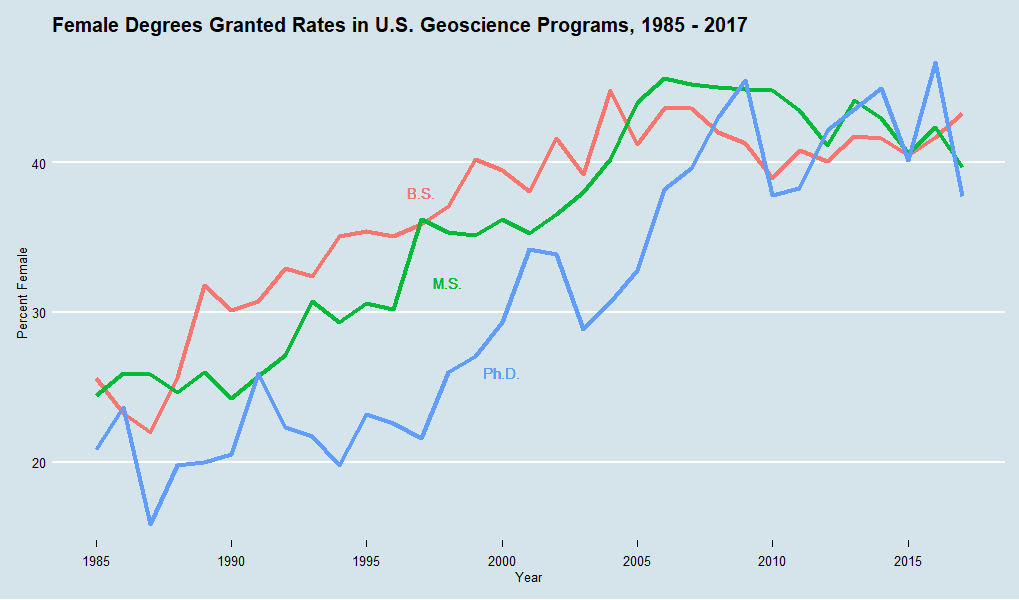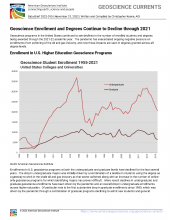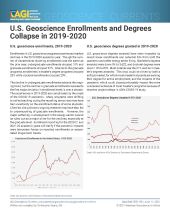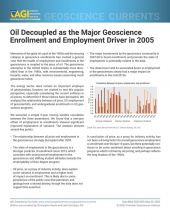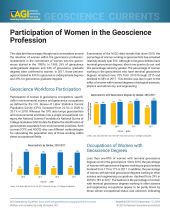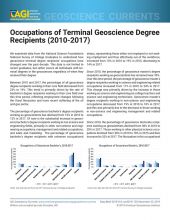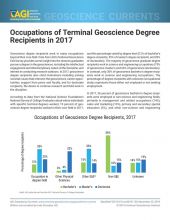Female undergraduate enrollment rates retreated slightly after several years of increases. Interestingly, the female participation rate in graduate enrollments rose sharply. This increase might be in response to an overall slower geoscience job market for bachelor’s recipients. This is likely enhanced with an exiting male-heavy cohort which did not seem to continue on to graduate school in response to the slowing job market, thus returning female graduate enrollment rates back towards the levels seen between 2005-2009.
The participation rate of women in geoscience degree programs remained within the range of the past decade. However, relative to 2016, there were a number of trend reversals, especially at the graduate level. Following a strong year of doctoral degrees awarded to women in 2016, the percentage of female doctorate recipients in 2017 dropped sharply to 38%. The recent variability in doctoral degree participation rates may be reflective of specific cohorts or other external factors which have optimally positioned a larger number of women to complete their degrees in specific years.
The percentage of women receiving bachelor’s degrees continued its steady increase, echoing the enrollment trends of the last 10 years. Some of the increase in female participation rate in bachelor’s degrees can also be attributed to the departure of the pronounced male-dominated cohort of enrollments in response to the shale gas boom.




